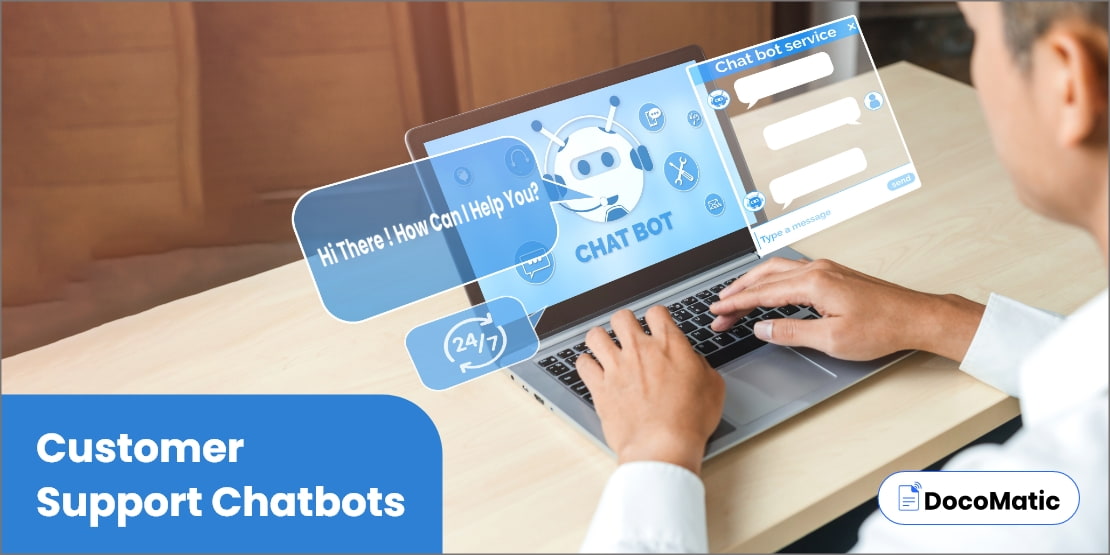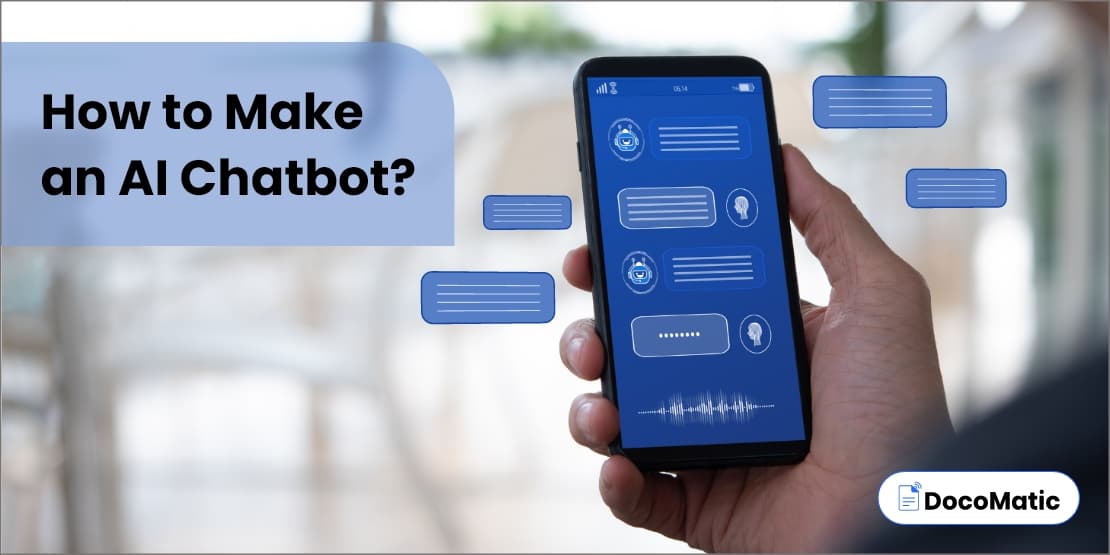The fast-paced digital world of today is making customers expect instant and easy access to support and information. Chatbots are emerging as exciting opportunities for businesses to meet this demand. And these are also offering great income potential. This is backed by the global chatbot market, which is forecasted to generate the revenue of $454.8 million by 2027.
By combining the technology of an AI chatbot with a knowledge base, businesses can cater to customers in a more personalized manner. This blog covers all about the benefits and integration of knowledge base chatbot so that you can implement it easily in your business.
Table of Content
What is a Knowledge Base Chatbot?
A chatbot that uses a knowledge base to respond to customers in an instant manner is referred to as a knowledge base chatbot. This AI chatbot provides relevant information, reduces the workload of the customer support team, and generates an appropriate answer to the user query.
Benefits of Knowledge Base Chatbot
A knowledge based chatbot uses data and algorithms to analyze customer inquiries and provides the most appropriate answer. Here are some of the advantages of the knowledge based AI chatbots:
- The chatbot can guide users through the knowledge bases, make suggestions on useful resources or articles, and provide personalized assistance.
- After trying to answer whatever the user asks, if the chatbot is unable to proceed with a satisfactory answer, it can escalate the case to a human representative.
- Knowledge base chatbots offer a cost-effective way for businesses to deliver efficient customer service, thereby freeing up their support staff to work on more critical tasks.
- The integration of chatbot with knowledge based is bringing revolution in automation across customer service processes.
- The technology aids customer support teams to manage their other tasks and respond to more serious and complex questions whenever required.
- The speed at which customers get responses increases, thereby increasing the customer satisfaction level and positive inquiry resolution feedback.
6 Steps to Implement a Chatbot Knowledge Base Integration
1. Create a knowledge base plan
The first step of setting up your chatbot is clearly defining your objectives and creating a knowledge base. Start by brainstorming specific use cases and create a strategic plan so that your knowledge management can give you the needed output.
Come up with answers to questions like:
- What do your customers need?
- How can you improve the customer experience and boost sales?
- What type of questions do your customers usually have?
- What difficulties do your customers face?
After you have the answers to above or any other relevant question, create use cases based on specific queries. This will help you create a knowledge management solution that meets their requirements. Then, you can plan on using the knowledge base that you already use in your organization, or creating a new one, particularly for the chatbot.
2. Choose the right chatbot platform
Now, you need to choose a platform that aids with chatbot knowledge base integration. There are many chatbot platforms offering this functionality, hence you can evaluate them based on your requirements.
Many of these platforms use natural language processing and machine learning technologies that provide personalized customer experiences with automated interactions. Moreover, the right chatbot platform can support integration with existing systems and provide detailed analytics reports.
3. Configure the knowledge base chatbot integration
Once you have selected a suitable chatbot platform, you need to integrate the chatbot with your knowledge base. Doing so will enable AI algorithms to access the information in the knowledge base and use it to determine the users’ contexts. Thus, the chatbot will be able to identify customer needs and quickly respond to their queries.
To configure this, you will need to set up API connections and define data mappings between the two systems. It is a crucial step to connect the knowledge base with the chatbot at this stage.
The integration will help you ensure that the knowledge base chatbot is able to use AI-based recommendations and address customer queries efficiently. These automated responses in real time guide customers with the relevant answers to simple questions, such as FAQs to lower your load.
4. Train the chatbot and test its accuracy
The next step is to teach your chatbot about how to understand user queries and provide appropriate responses. This involves defining entities and intents that serve as building blocks to how the chatbot comprehends natural language. Intents are the customer’s purpose of conversation, while entities mean their specific details.
Testing the chatbot is another step to ensure accuracy and proper responses. You can create cases for the chatbot and evaluate its responses to test interactions. This will help you identify areas of improvement, how the chatbot understands user input, and generates responses.
5. Monitor performance and make necessary adjustments
Once you have successfully implemented the knowledge base chatbot, you can make the needed adjustments to improve its overall performance. As customers use the chatbot and provide reviews, you will be able to use the data to address areas where it is struggling.
You can monitor interactions including frequency of usage and time taken by the chatbot to answer customer questions. This will help you analyze customer experience and optimize all the knowledge bases.
Monitoring your intelligent virtual agent will help you identify new areas of offering additional support. By constantly refining the chatbot’s performance, you make it your valuable asset that engages users in an efficient way. You must also keep the information up-to-date for clear knowledge sharing.
6. Educate your customer service team
Once you have everything set, it is vital to invest time in training your support team on the chatbot and its content management. Relying solely on the chatbot may not be the best bet, so you need to ensure human agents are there to build customer relations alongside.
This will help keep your company culture more healthy and reliable. A strategy consisting of several customer service executives combined with the expertise of a chatbot will help you increase website visitors too. So, you must ensure that your users are effortlessly able to search, and get quick answers with high accuracy.
FAQs
There are several types of chatbots, such as:
- Menu or button-based chatbots
- Rule-based chatbots
- Keyword recognition-based chatbots
- Machine learning chatbots
- Hybrid chatbots
- AI-powered chatbots
Here are a considerations for you when choosing a knowledge base chatbot provider:
- Type of chatbot (rule-based or AI-based)
- Features of the chatbot platform
- Integration with existing systems
- Support and resources provided by the provider
- Pricing packages
- Scalability of the solution
Updating the knowledge base on a regular basis ensures relevance and accuracy of information, thereby improving customer experience. This serves as a vital measure to align it with the changing policies, products, and services in your business.
Conclusion
While the era of artificial intelligence is here to stay for a good amount of time, a knowledge base chatbot is a brilliant tool for your business. It doesn’t just answer questions, but also improves the overall customer feedback. While there are a lot of chatbots available, knowledge base chatbot helps customers with instant access to the required information.
It also provides personalized support, thereby reducing the workload of customer service teams. A properly created and up-to-date knowledge base chatbot is crucial to provide customer satisfaction in the long term. By following the best practices for integrating a knowledge base to your chatbot and regularly monitoring it can take the value of your business to the next level.






